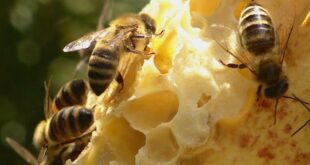Conservationists worry not enough is being done to protect the threatened species
In the coming months, a city on Montreal's South Shore aims to finish building a boulevard that cuts through a thriving wetland so motorists can shave some time off their commute.
But before the black top is spread, employees of Quebec's Ministry of Wildlife have been wading through the water-saturated forest, collecting a tiny frog and its eggs with hopes of boosting the species' population through a reproduction program hosted by the Biodome.
However, conservationists like Tommy Montpetit say that's not enough to protect the western chorus frog.
"What they're doing, basically, is annihilating the population that exists there," he said.

The western chorus frog lives for about a year, and he said removing eggs and frogs during the crucial breeding season may not succeed.
"We don't know what's going to happen," he said, but what's clear is the frogs will be returned to a habitat that is further destroyed by a roadway.
He wants, at the very least, for the road to be built above the wetland so the frogs can continue to move freely below.
Road project halted in 2021
The 300-metre stretch of road in Longueuil, Que., was nearly completed in 2021. The forest was clearcut. The boulevard's foundation was laid, street lights installed and manholes dug.
The city even spent about $1 million to build a wildlife corridor under Béliveau Boulevard. But that will likely cause more harm than good, Montpetit said, because predators will learn to wait by exit points to catch frogs filing through.

The road was near completion when first a Superior Court order and then a federal decree halted its construction to protect the western chorus frog, a threatened species under the Species at Risk Act.
While that was going on, a municipal election was held and newly elected Mayor Catherine Fournier inherited the unfinished road. She reassessed the project and found the damage can't be undone.
"The environment cannot be fully restored," her office said in a statement, so the goal is to complete the road this summer with some improvements.
Improving plan with more fauna crossings
After an assessment by the province's Ministry of Wildlife, the under-the-road crossing for large fauna will be enhanced and there will be three specific crossings added for the frog, the statement says.
The road cuts through a wetland that is directly adjacent to a 260-hectare nature preserve known as the Boisé du Tremblay. Fournier's office says the city will continue to protect the Tremblay, Roberval and Fonrouge forests, which are home to the largest population of western chorus frogs in Canada.

But work on the road will continue, connecting R-100 Street to Béliveau Boulevard, creating a straight shot between de la Savane Road, where the Saint-Hubert Airport is found, and Jacques-Cartier Boulevard East, at the Pierre Boucher Hospital.
The new road is designed to help dampen rush-hour traffic on Roland-Therrien Boulevard.
Meanwhile, the eggs and frogs collected from around the construction site this spring are being kept safe at the Biodome.
The tadpoles will emerge and develop in a protected environment, and the collected adults, treated with hormones, will be encouraged to breed in captivity — a process that has proven effective, according to Emiko Wong.
"It has been successful in the past. In 2016, there were almost 2,000 froglets that were born with this assisted reproduction," said Wong, head scientific advisor for conservation at the Montreal Biodome.

Along with urbanization and agriculture, climate change also plays a role in the frog's decline because water levels in ponds and wetlands are not always the same year after year, she said.
"What we are trying to do is make sure we collect the eggs at a good moment so we can protect them from any environmental threats and then after, we can release them back into the wild," said Wong.
That means, come June, the froglets will be reintroduced to the environment. Some will go back to the wetland around the road construction site, and others will go to the nearby provincial park, Mont-Saint-Bruno.
Currently, there are no western chorus frogs in the provincial park, which is a good thing, said Wong, as scientists will be able to monitor the new population closely and accurately gauge the program's effectiveness.

"If we took better care of their habitats, we probably wouldn't have to do all this," she said.
"Unfortunately, this is not the case. This is why we are trying to mimic mother nature."
Conservationists worry plan won't work
Still, conservationists like Montpetit and Alain Branchaud, director of the Canadian Parks and Wilderness Society's Quebec division, are worried the breeding program will fail.
Branchaud said artificially reproducing the species and reintroducing them to new territories is not the way to go.
Removing the frogs creates a gap in natural reproduction, he explained. If you cut a whole year of reproduction, the frog might disappear from that area, he said.
He would like to see the province hold off on collecting specimens for now, and he would like road construction to be delayed another year so a better plan can be developed.
"We really need to protect the natural sites," he said. "We really need to make sure that we protect a huge area for the western chorus frog."
*****
Credit belongs to : www.cbc.ca
 MaharlikaNews | Canada Leading Online Filipino Newspaper Portal The No. 1 most engaged information website for Filipino – Canadian in Canada. MaharlikaNews.com received almost a quarter a million visitors in 2020.
MaharlikaNews | Canada Leading Online Filipino Newspaper Portal The No. 1 most engaged information website for Filipino – Canadian in Canada. MaharlikaNews.com received almost a quarter a million visitors in 2020.







